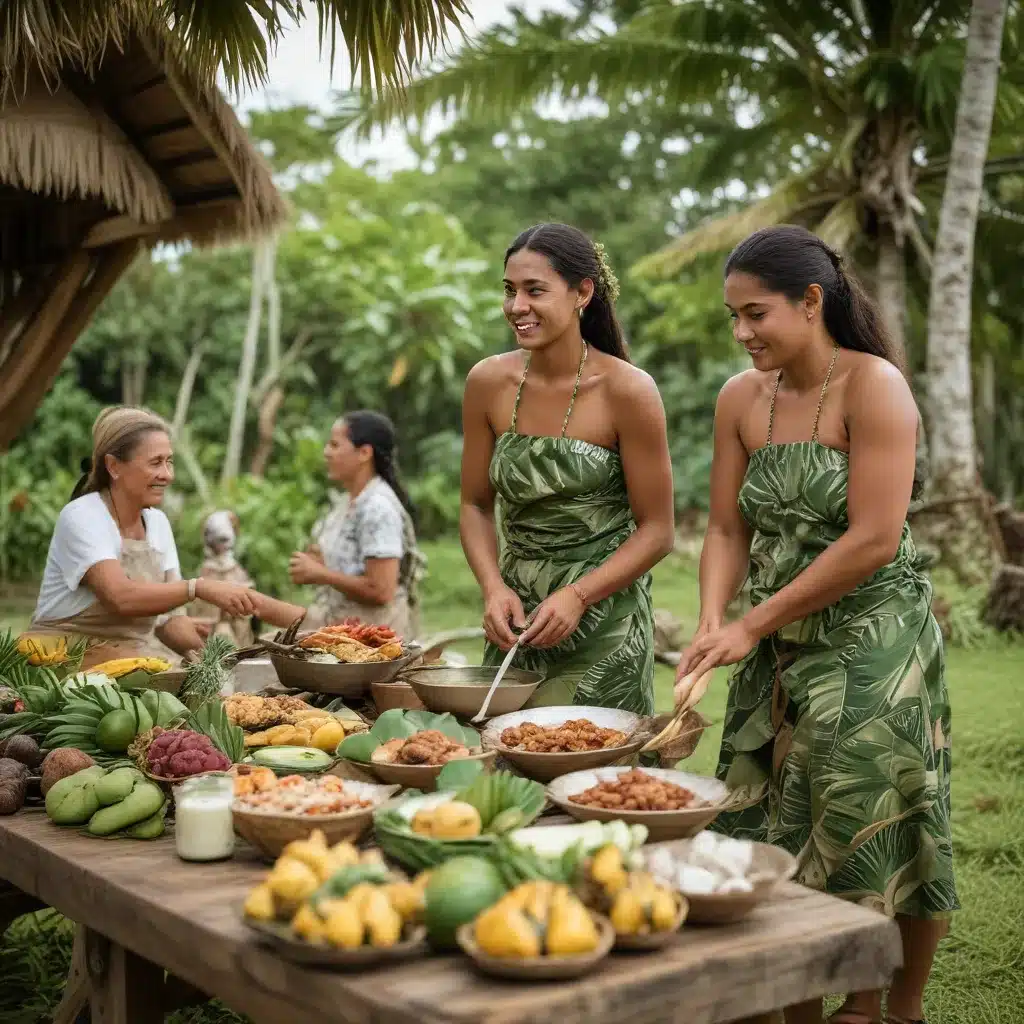
As a seasoned cultural historian and curator, I’m deeply immersed in the rich heritage, history, and traditions of the Cook Islands. Beyond the picturesque beaches and swaying palms, this Polynesian archipelago boasts a fascinating culinary legacy that reveals the ingenuity, resilience, and cultural identity of its people.
Tracing Ancestral Food Traditions
The Cook Islands’ culinary landscape is a tapestry woven with threads of indigenous Polynesian knowledge, colonial influences, and the adaptations of a seafaring people. Staple ingredients like taro, breadfruit, and coconut have sustained the islands’ inhabitants for centuries, passed down through generations. Innovative fishing techniques using intricate canoes and traditional methods speak to the islanders’ profound connection to the ocean.
Anthropological research uncovers the deeper significance of these culinary practices. As one Cook Islands curator notes, “Our foods are not just sustenance – they are a reflection of our cultural identity, our history, and our continued resilience as a people.” Delving into the archives and archaeological records, we can begin to piece together the untold stories of how food has shaped the Cook Islands’ social fabric and traditions.
The Imprint of Colonial Encounters
The arrival of European missionaries and colonizers in the 19th century irrevocably transformed the Cook Islands’ culinary landscape. Introduced staples like rice, wheat, and canned goods slowly infiltrated the local diet, while traditional methods of food preparation and preservation were suppressed. However, the islanders adapted these foreign ingredients, fusing them with indigenous flavors to create unique hybrid dishes.
“It wasn’t a simple story of cultural erasure,” explains a Cook Islands historian. “Our ancestors found ways to preserve their culinary heritage, blending it with new elements to assert their identity and resist assimilation.” Dishes like rukau (taro leaves in coconut milk) and umu-cooked feasts continued to be prepared, even as European influences permeated the islands.
A Cuisine of Resilience and Adaptation
Uncovering the archaeological evidence of the Cook Islands’ culinary history reveals a fascinating narrative of resourcefulness and innovation. Researchers have discovered remnants of elaborate earth ovens (umu) used for communal feasts, as well as discarded shells and bones that provide insights into the islanders’ diverse fishing and foraging practices.
“What’s remarkable is how the Cook Islanders were able to thrive, even in the face of significant challenges,” notes a local archaeologist. “Whether it was adapting to new ingredients or finding creative ways to supplement their diet, their culinary adaptations were a form of cultural resistance and survival.”
Indeed, the ability to transform limited resources into delectable meals speaks to the ingenuity of the Cook Islands’ cooks and food producers. Dishes like rukau and ika mata (raw fish in coconut milk) not only nourished the body but also reflected the islands’ deep connection to the land and sea.
Preserving Culinary Traditions
Today, the Cook Islands Library and Museum plays a vital role in safeguarding the archipelago’s culinary heritage. Through carefully curated exhibits, educational programs, and community outreach, the museum aims to celebrate the islands’ food traditions and inspire future generations to embrace their cultural identity.
“It’s not just about preserving recipes,” explains the museum’s director. “It’s about honoring the stories, the knowledge, and the resilience embedded in our culinary practices. By sharing these untold narratives, we hope to empower our people and foster a deeper appreciation for our unique heritage.”
The museum’s collections showcase a trove of traditional cooking implements, including intricate woven baskets, carved wooden utensils, and ancestral umu stones. Visitors can also immerse themselves in demonstrations of traditional food preparation techniques, learning firsthand about the islands’ culinary wisdom.
Culinary Eco-Tourism and Community Engagement
Beyond the museum’s walls, the Cook Islands’ culinary heritage is being celebrated through eco-tourism initiatives and community-based experiences. Travelers can participate in hands-on cooking classes, learn about sustainable fishing practices, and explore local food markets – all while gaining a deeper understanding of the islands’ cultural traditions.
“Our food is not just about sustenance – it’s about community, identity, and our connection to the land and sea,” says a local tour guide. “By inviting visitors to engage with our culinary heritage, we’re not only preserving these traditions but also fostering meaningful cultural exchange and understanding.”
The Cook Islands Library and Museum also works closely with community groups to document oral histories, collect recipes, and organize cultural festivals that celebrate the archipelago’s diverse culinary legacies. These collaborative efforts ensure that the islands’ food traditions remain vibrant, accessible, and celebrated for generations to come.
Uncovering the Anthropology of Cook Islands Cuisine
As a cultural historian and curator, I’ve been deeply inspired by the untold stories of the Cook Islands’ culinary heritage. By weaving together archaeological evidence, historical accounts, and the lived experiences of the islands’ people, we can uncover a rich tapestry of resilience, adaptation, and cultural identity.
The Cook Islands’ culinary traditions are not merely about the preparation and consumption of food – they are a reflection of the islanders’ profound relationship with their environment, their ancestors, and their collective future. Through the preservation and celebration of these culinary legacies, we honor the ingenuity, resourcefulness, and unwavering spirit of the Cook Islands’ people.
I invite you to delve into the Cook Islands’ culinary anthropology, to explore the museum’s treasures, and to immerse yourself in the islands’ vibrant food culture. It is through these untold stories that we can gain a deeper understanding of the Cook Islands’ enduring legacy and the resilience that has sustained its people for generations.

